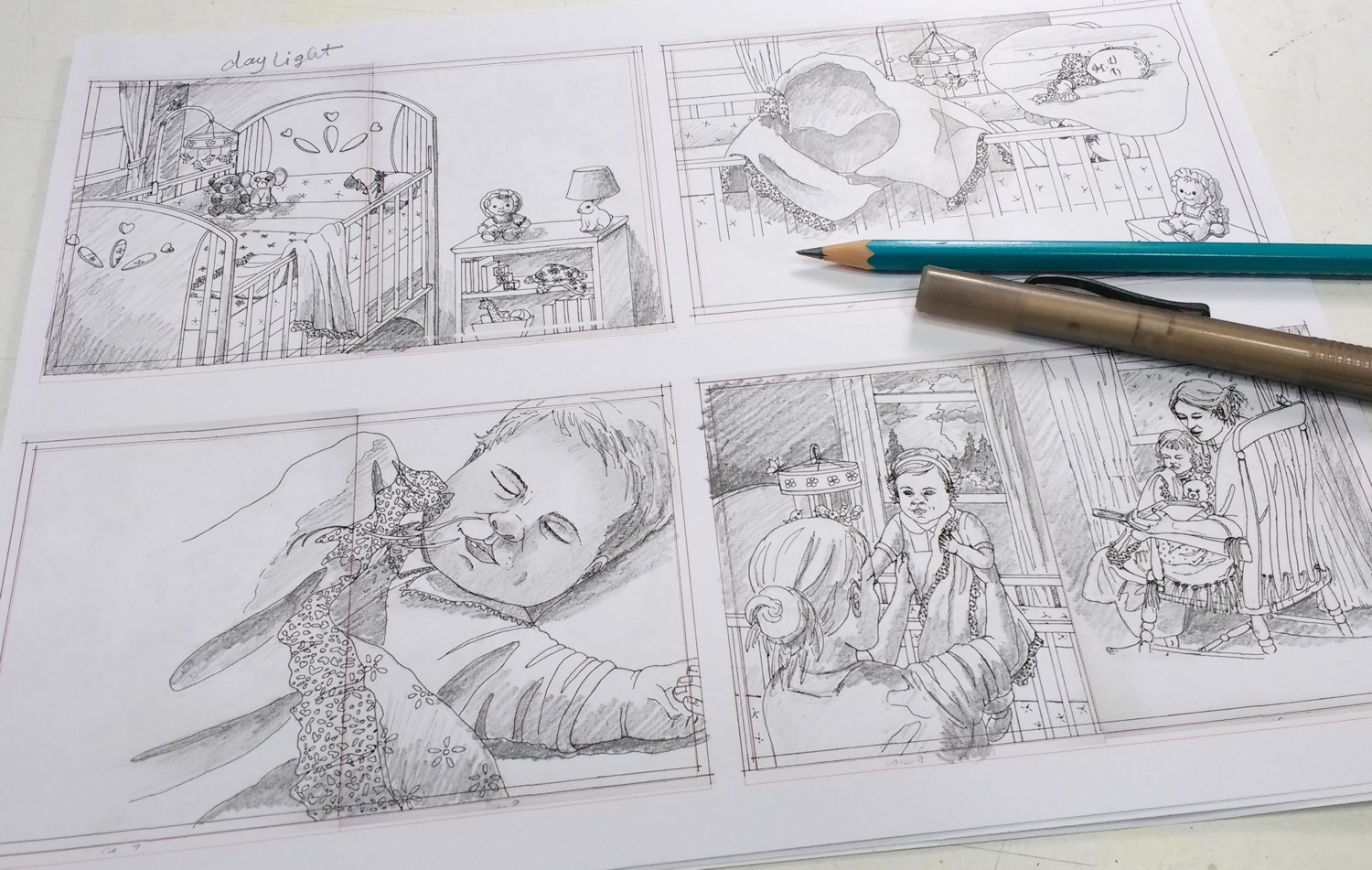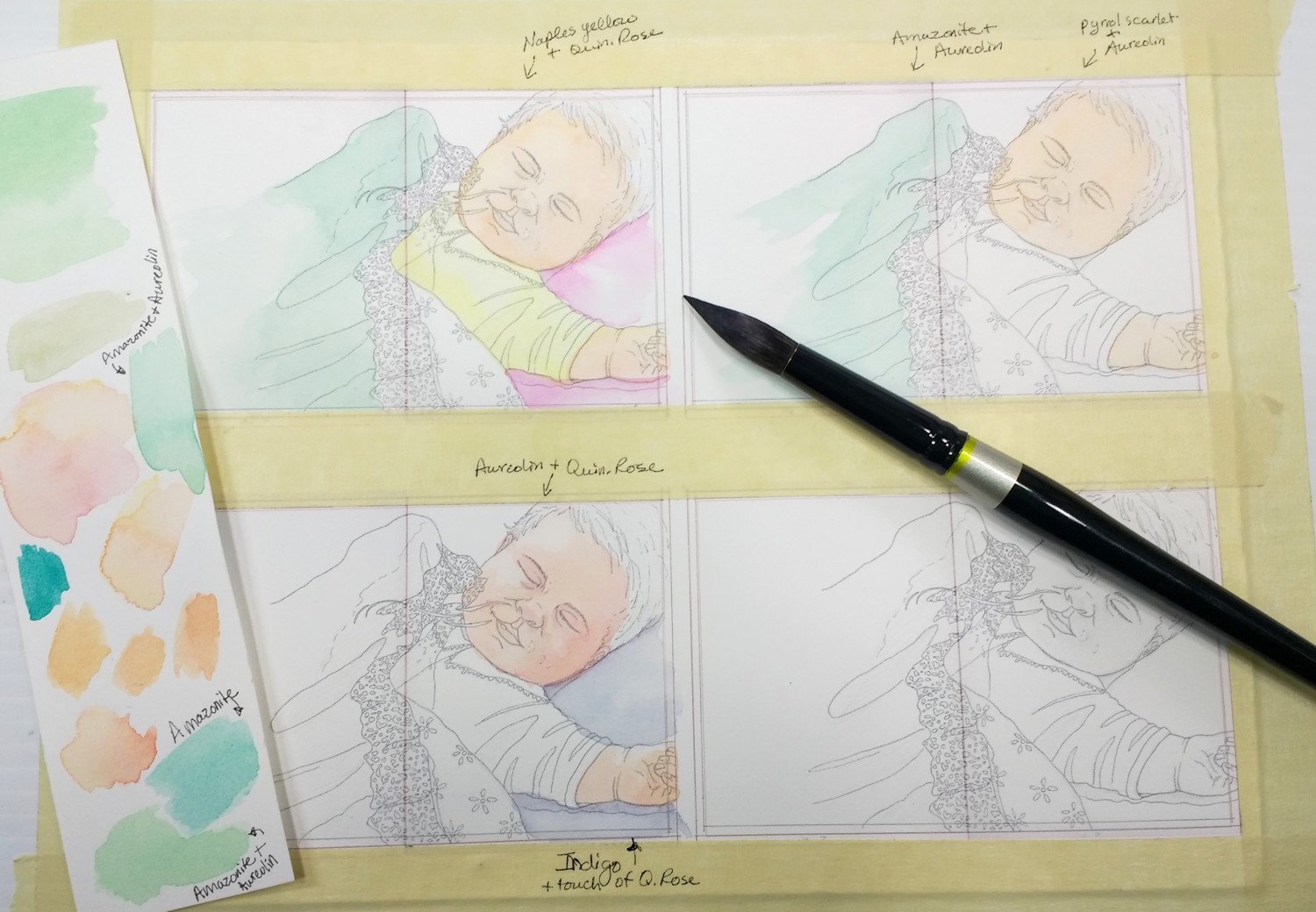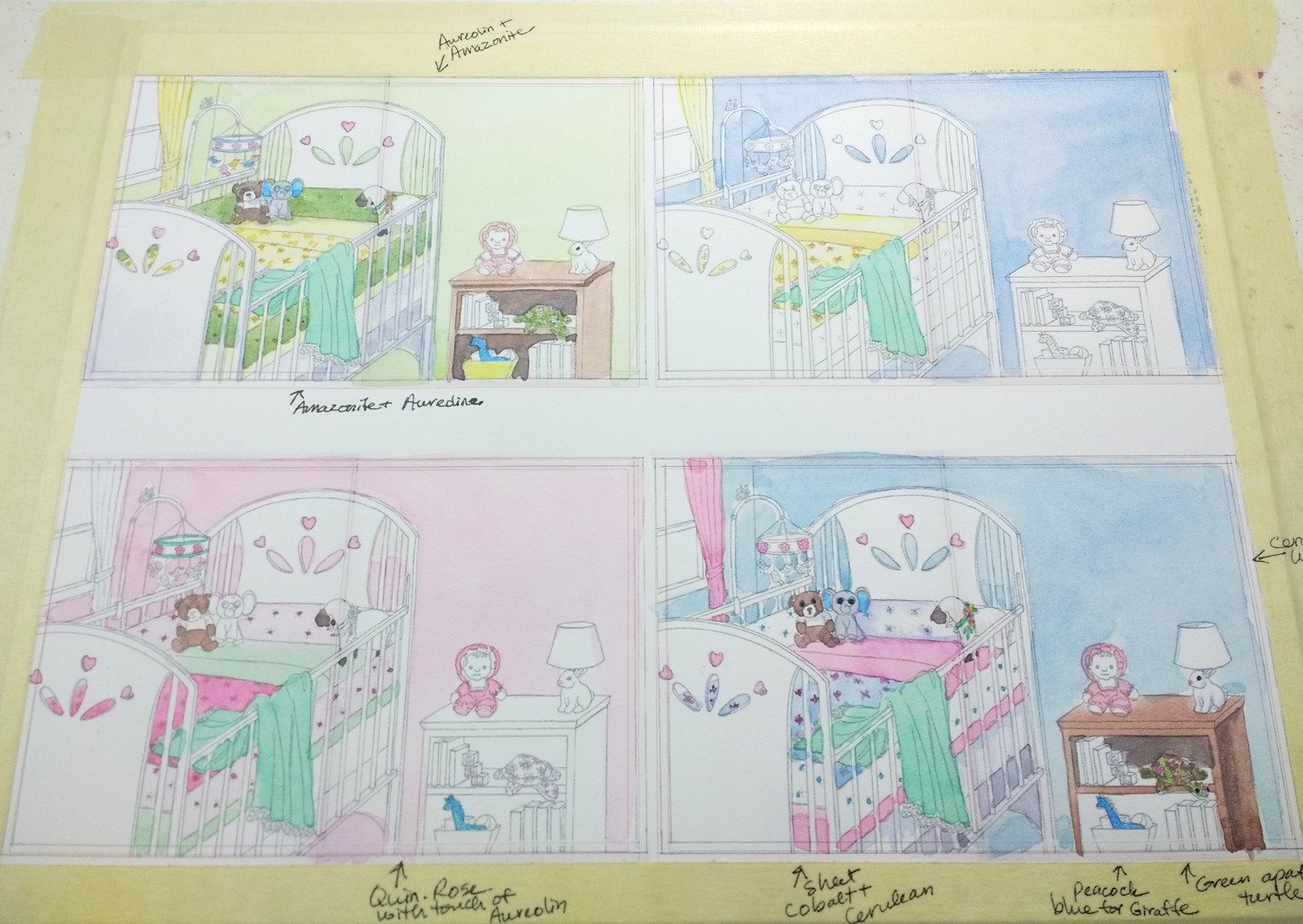I am working on creating 17 illustrations for a children’s book, “For I Am Yours” written by author Pauline Hawkins. This is the second post of my journey to create the illustrations. I have not illustrated a book before and I thought I would blog about the process. The first blog post in this journey is linked here: Creating Illustrations for a Children’s Book
Fabriano Hot Press paper - Click to Enlarge
Yesterday, I started painting two of the pages on Fabriano 140 lb. hot press paper. I have used this paper for other paintings and really like it for ink and watercolor. However, while painting one of the figures in the story, I tried to make a change by lifting some color off with a stiff brush and because the Fabriano is a soft paper, the paper surface became marred. My usual substrate, Arches watercolor paper, can handle a lot of rougher techniques like: lifting, masking, and scrubbing. So, I decided instead of struggling with the Fabriano throughout this process, I would go back to the Arches paper.
Masking Fluid - Click to Enlarge
After deciding to change back to Arches 140 lb. cold press paper, I began with pages 3 and 4 because there are no figures, accept toys, on this double spread. So, I could get used to my process for the illustrations without the extra pressure of painting a figure. My paper was stretched and dried overnight. I taped the edges down to help hold the paper a little more firmly while painting some of the wetter areas. Then I masked some of the shapes with masking fluid to protect them while painting.
Mixing Colors - Click to Enlarge
Before starting the painting, I mixed a large amount of the color for the wall color in the baby’s room and a smaller amount for the blanket. I mixed the colors in some jars with lids to hopefully have enough to use for all the pages of the book. I used a mix of Amazonite Genuine by Daniel Smith (the aqua color) and Aureolin Yellow for both colors. There is more yellow the wall color and more Amazonite in the blanket color.
I began painting the bedroom walls on dry paper because I didn’t want to lighten the color I had premixed. This is a different way to work because I usually mix the color I need as I am working on a painting. Once the wall color was dry, I started painting some of the other objects in the room. I am making up the scenes, so I have to imagine where the light is coming from and how that will affect the objects. I will be adding layers and making adjustments as I go.
I have 3 other pages drawn and stretched onto the Arches watercolor paper. I will start painting portions of these that repeat from this first image like: the blanket, walls, stuffed animals, etc. That way I can get a production line going.
I have one video on my Youtube channel so far and will continue to film and post others. And you can check out Pauline Hawkins’ blog post - “For I Am Yours: The Story Behind the Story”.
First Layers - Click to Enlarge






